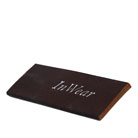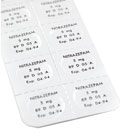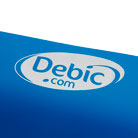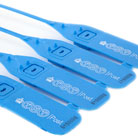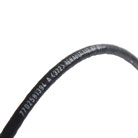Hotprint
How does a Hotfoil Printer work?
Hotfoil Print (or Hotstamp or Hotprint) is regarded as the precursor to TTO. Like with TTO ink is also melted from a ribbon onto the surface to be printed (substrate). However, in Hot printing this is done with a heated metal cliché instead of a digitally controlled print head. To change the print, this plate therefore has to be physically exchanged. It is however possible to print incremental numbers or dates by using a datewheel or numberator. Because Hotprint is economic, extremely reliable and produces better adhesion than TTO, it is widely used.
Scratch resistant coding on any surface
In Hotfoil as well as TTO printing, a ribbon with solid ink is rolled across the substrate by the printer. The heated metal cliché then briefly presses the film onto the material to be printed, melting the ink across and creating the print. The material to be printed needs to be static during printing (intermittent). For a (continuous) production line where products have to be printed while in motion a buffer balance can be used. This creates a standstill moment of the product so printing can be done. Because Hotprint has a longer stamping time and uses more energy for printing than TTO images are more scratch proof and adhesion is better.
Applications for Hotfoil Printing
Because of their robust mechanical character, Hotprinters are mainly used for primary stages of production processes in which TTO print heads cannot operate. For example in dusty, heavy industrial factories and agricultural or construction industries. For applications where prints do not need to change too often, or only incrementally increasing numbers or dates are required, its low purchase cost can be the deciding factor for using a Hotprinter. Finally, a Hotprinter is able to print very sharp logos/images onto difficult surfaces such as hard synthetics, fibres or even leather.
